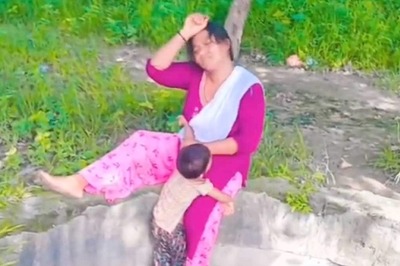
views
It was a bright day in October and farmers had been agitating for the past one month, demanding more water for their fields. There was tension in the air after a police lathi charge the previous day, which felled more than a hundred farmers. The cops opened fire after angry protesters had burned a few shops. Seven farmers died.
No, this is not Mandsaur 2017, but Sri Ganganagar in 2004.
Raju Jat was one of the agitating farmers in the northernmost district of Rajasthan, a fertile tract watered by the Indira Gandhi canal. He was hit by a bullet, but survived.
“When I was shot, I felt the pain in my body, but when I heard of Mandsaur, I felt the pain in my heart,” said Jat, who is referred to as ‘Zinda Shaheed’ in his community. “The issues may be different, but the end is the same. If we raise our voices, we are killed by bullets.”
The return of farmers’ politics after nearly three decades is being noted by national commentators. Peasants in Maharashtra and Madhya Pradesh have taken to the streets to highlight farm distress caused by unremunerative prices for farm products. Police firing in Mandsaur caused the death of five farmers.
An across the board deflation of agro-commodities has resulted in farm produce selling for less than the cost of production. The gap in earnings has pushed farmers to borrow money, pushing them into a cycle where the debt cannot be serviced. The resulting farm distress is causing peasant unrest, which in some cases is being quelled with a heavy hand by the state.
When Raju and the farmers of Sri Ganganagar heard about the Mandsaur firing on June 6, they organized commemoration meetings. The issues faced by both sets of farmers are different manifestations of the same farm distress.
On 27 October, 2004 the bullet hit Raju in the stomach and exited through the back, missing the spinal cord. He was rushed to a hospital in Bikaner where he took two months to recuperate. The doctors operated upon his stomach and intestines and he still has scars in his midsection.
The issue that the Ganganagar farmers were agitating about was the lack of water in the Indira Gandhi canal. One of the largest irrigation projects in India, the IG canal waters Punjab, Haryana and Northern Rajasthan. In Rajasthan it runs through Barmer, Bikaner, Churu, Hanumangarh, Jaisalmer, Jodhpur and Sriganganagar.
In 2004, after years of declining water, farmers in Ganganagar decided to embark on an organized protest. They wanted more water for their fields and they wanted Vasundhara Raje’s government to do something about it.
Water is a critical input, especially in the fertile northern regions of Rajasthan where water-intensive crops like sugarcane, tangerines etc are grown. Only one third of farmland in India is irrigated and even this is facing stress as water flows decrease.
Declining water is just one manifestation of rural distress. Lack of water decreases yields and agricultural productivity. What the Ganganagar farmers didn’t face in 2004 was debt and declining prices for their products.
Today, farmers across India are facing a deflation of agro-commodities and market prices that don’t cover the cost of production. The MSP is not enforced and the government does not procure their products, the farmers allege.
“No party in India really cares for farmers, although most say they will make our lives better, it’s just an electoral gimmick,” Raju told News18. He says that the government should subsidize farmers by covering the cost of production and giving a 50% profit over that, as recommended by the Swaminathan Committee.
Social unrest is bound to get worse if the government does not address rural distress. “There will be more militant struggles in Rajasthan if they don’t do anything,” warns the Zinda Shaheed.




















Comments
0 comment